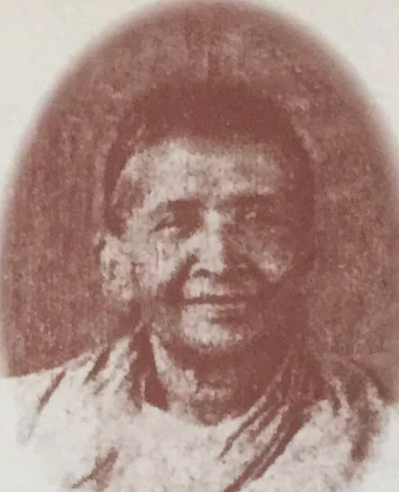Yashodabai Agarkar, known to most as Gopal Ganesh Agarkar’s wife, was a social reformer and an advocate of women’s education. The story of her personal struggles shows her courage and determination to follow the ideas inculcated by her husband and how she stood as an example to other women and widows ill treated by the society.
Yashodabai Agarkar is a figure missed entirely by history. An inconspicuous reference as Gopal Ganesh Agarkar’s wife has defined her identity. Born as Ambu Phadke in 1868, very little is known of her early life. She was married to Gopal Ganesh Agarkar in 1877, at the age of nine and lived as Yashodabai Agarkar all her life. Yashodabai’s marital life was one of countless struggles. She lived with her parents till she attained puberty and met Agarkar a few times after their wedding. Yashodabai writes of this time period[1], “It had been five years since our wedding. Every year when he [G.G Agarkar] came home for vacation, I would visit him for one-two months. And I would spend the rest of the time at my parents’ home”[2] (Ranade, 1997, p. 64). Even after Yashodabai moved into her matrimonial home in 1882, the separation continued. In 1883, Agarkar was convicted for defamation against the British-appointed Regent and was imprisoned for seven months[3]. Battling financial hardship, Yashodabai spent these seven months alone.
Gopal Ganesh Agarkar educated Yashodabai and kindled the spirit of reform in her. His thoughts on women’s upliftment and feminism seeped into Yashodabai. Against the wave of criticism and mockery leveled by the society against Agarkar, she stood by his side. While Agarkar was mockingly called as ‘Sudharak’ (meaning reformer; eponym of the newspaper started by Agarkar), Yashodabai was called as ‘Sudharakachi bayko’ (Reformer’s wife) (Deshpande, 2021). After Agarkar’s death in 1895, Yashodabai refused to shave her head, as was customary for widows. People around her advised her, warned her and at times even threatened her to follow the custom and shave her head. Yashodabai recounts – “People tried to instill fear in me telling me – ‘the kids are young and they are yet to be married. Just shave your head and follow the custom so that things will fall in place. Or else you will inflict pain on your family.’ But I didn’t care about their warnings or threats and I continued on the path Gopalrao had shown me”[4] (Ranade, 1977, p. 109). What empowered Yashodabai to fight the custom was her courage and also the promise she had made to Gopalrao. In 1893, Gopal Ganesh Agarkar had asked Yashodabai to promise him that she wouldn’t shave her head after his death.
Agarkar was saddened to see how the widows of his contemporaries were reduced to penury. He kept a small amount aside for his funeral expenses and asked his uncle Dattopant Bhagwat to look after Yashodabai and their children after his death. Accordingly, Yashodabai moved to Akola and was under the care of Dattopant Bhagwat. Dattopant was a rigid traditionalist and he fumed over Yashodabai’s decision to keep her hair intact. However, he was moved by Yashodabai’s commitment to her late husband; her resilience gradually brought about a change in him. Later in his life, he insisted that widows in his family not shave their heads. (Deshpande, 2021).
In Akola, Yashodabai met Manutai Bapat, a child widow. Recognising that it was education that had set her free from the clutches of customs and society, Yashodabai decided to start a school for widows. With Manutai as her first student, Yashodabai invited child widows across Akola to join her school (Deshpande, 2021). Under her leadership, Akola became a center for widow education. Several of her students went ahead and started imparting education to other widows. While working as an educator for widows, Yashodabai also began working as a midwife where she visited women from different castes. She had dedicated her life to women’s upliftment and despite financial hardships, Yashodabai did not charge money for her services as a midwife. Yashodabai was also instrumental in setting up Dabke medical center, the first maternity home in Akola.
According to Dr. Deshpande, a controversial conference was held in Akola and was presided over by Yashodabai Agarkar. The aim of this conference was to challenge regressive practices and to encourage widows to participate in society freely. Yashodabai applied kumkum to the widows who attended the conference[5]. Yashodabai is recorded to have delivered a fiery speech recounting her widowhood, her experience of teaching widows, and the importance of empowering widows in specific and women in general. Inspired by her late husband, Yashodabai later also joined the national struggle against the imperial state. She was a part of the Salt march and later in the 1930s, she supported the cause of satyagraha. She sought to involve widows in the national struggle; she took an active part in the Satyagraha organized by Varhad Prantik Sabha where she unfurled the national flag. Yashodabai was detained by the police for her involvement in various protests and satyagrahas but since she was above the age of sixty, she was never arrested.
Yashodabai Agarkar passed away in 1939 at the age of seventy one. Her life was marked by endless struggle as she faced widowhood, resistance from her family, mockery by the society, and poverty. She stood by Gopal Ganesh Agarkar through his hardships; Agarkar awakened the feminist, the liberal in her and she inculcated his commitment to social reform. The society discredited her as ‘sudharakachi bayko’ but through determination and dedication to upliftment of widows Yashodabai Agarkar carried her pursuit, molding the opinions of traditionalists and touching the lives of many.
Endnotes
[1] The translations are by the author of this piece.
[2] होता होता पाच वर्षे लोटली. तेवढ्या अवधीत मी दरसाल दीड-दोन महिने ते सुट्टीत घरी आले म्हणजे सासरी जात असे. बाकीचा वेळ माहेरी असे.
[3] For more, see Public Opinion in Colonial India : The Kesari and the Kolhapur Affair, 1881-83, Patil, A., Indian History Congress, 2006-07.
[4] मला लोकांनी नाना तऱ्हांनी भीती घातली – ‘तुझ्या मुलांची लग्नकार्य व्हायची आहेत. आपली मुकाट्याने सोवळी होऊन रुढींप्रमाणे वाग म्हणजे सर्वकाही सुसूत्र होईल. नाहीतर उगीच हाल अपेष्टा करून घेशील’. पण मला त्यावेळी कोणाच्याच म्हणण्याची पर्वा वाटली नाही व मी गोपाळरावांनी सांगितलेल्या मार्गापासून एक पाऊलभरही ढळले नाही.
[5] According to prevailing customs, applying kumkum on the forehead was forbidden for widows.
References
Deshpande, A. (2021, August 3). विद्रोहाची शलाका. Maharashtra Times. https://maharashtratimes.com/editorial/article/dr-ajay-deshpande-talks-about-yashodabai-gopal-agarkar/articleshow/85005667.cms
Ranade, P. (1997). यशोदाबाई आगरकरांच्या आठवणी : एक आकलन (2nd ed.) [Print]. Rajhans Prakashan.


